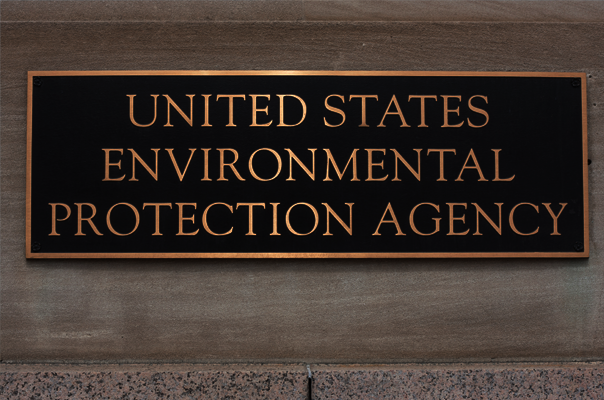Politics not Policy Guiding the RFS
The Environmental Protection Agency (EPA) is required by law to set the amount of biofuel they will require to be blended with gasoline for the following year. They are tasked with doing this before December to give businesses some idea of what their mandates will be for the upcoming year. But we are more than half way through 2014 and EPA still has not set the amount of biofuel required for this year. It appears that political interest is again trumping public interest at the Environmental Protection Agency (EPA).
Continually pushing the target back is creating uncertainty for refiners and producers of biofuels for no discernable legitimate purpose, but makes political sense for the Obama Administration in an election year. When the government attempts to legislate and regulate a market it created, the needs of both consumers and producers are subverted to the needs of the politicians and the ever-changing political climate.
Regulatory Process for RFS
Refiners need to know the 2014 targets to produce their compliance with 2013 because the RFS allows refiners to save a certain amount of renewable credits (known as RINs[1]–are serial numbers assigned to biofuel for the purpose of tracking its production, use and trading, and can be purchased to fulfill part of the RFS requirement) to use to show compliance the next year.
Here is a table of how the regulatory process is supposed to work and what has actually happened:
|
How the regulatory process is supposed to work for the 2014 RFS: |
What actually happened so far with the 2014 RFS: |
| Before end of September 2013:
EPA proposes RFS numbers for the next year (allowing companies to figure out whether to “spend” or “save” RINS for the 2013 compliance year) |
November 29, 2013:
EPA released its proposed 2014 RFS numbers on November 29th, 2013, which was followed by a comment period that ended on January 28th, 2014. |
| Before November 30, 2013:
EPA finalizes the biofuel volume requirements for 2014 |
Ongoing…
EPA still has not finalized their 2014 RFS and originally stated they would finalize the numbers in February but didn’t meet that deadline and will release it “soon”. |
| Before February 28, 2013:
Refiners submit their compliance report detailing their use of RINs for 2013 compliance year. |
Ongoing…
The deadline for the 2013 compliance report has been pushed back twice first to June 30th, 2014 and now until September 30th 2014. |
It is apparent that EPA has been behind on their deadlines throughout the entire regulatory process for the 2014 RFS. However their recent extension for 2013 compliance buys them more time to delay the entire process which could likely result in similar uncertainty and delay next year when EPA is promulgating the 2015 RFS.
EPA Drags their Feet
This is not the first time EPA has waited until August to set the final volumes. In fact, EPA hasn’t met the statutory deadline in November since 2011. EPA claims that extensive comments on the proposal have forced them to take additional time to finalize the targets for the 2014 RFS[2], but this does not explain why EPA was late with the proposed rule in the first place. And it does not explain why, six months later, that EPA has not finalized the rule. None of the factors that EPA uses to determine RFS targets have changed in any material way since the fall, it’s likely the delay resulted from an internal decision.
According to EPA, “The four separate renewable fuel standards (cellulosic biofuel, biomass-based diesel, advanced biofuel, and total renewable fuel) are based primarily on 49 state gasoline and diesel consumption volumes projected by EIA, and the total volume of renewable fuels by EISA (the legislation that created RFS) in the coming year.”[3] In this case, EPA can revise the numbers set by EISA by looking at the EIA projection for demand and setting targets lower than the “blend wall.”
The blend well is a term to describe the fact the vast majority of cars can only use E10 (gasoline that is 10 percent ethanol). This places a cap on the total amount of ethanol that can be blended with the gasoline supply.
These constraints leave little room for the EPA to make any drastic changes to the numbers they already proposed last fall.
The only opportunity that would allow EPA to significantly change the 2014 numbers they proposed last November would be to set the target above the “blend wall” to “create” a market for higher blends of ethanol. However the White House has already stated this is not a “practical solution” when promulgating the 2013 RFS because vehicle engine durability would be compromised, manufacturers won’t warranty gasoline vehicles for more than 10 percent ethanol, and there is a lack of fueling infrastructure.[4] Since the situation has not changed this year, it seems unlikely that the White House would reverse its claims from last year.
Political Considerations
Given that that there have been no material changes to the fuel market since last year, it is difficult to see why EPA would not have finalized the 2014 volumes, especially now that it is July, 2014. But another possible explanation for EPA’s actions is that EPA is working to create a political issue to be used by RFS supporters in the upcoming mid-term elections.
More specifically, the recent extension has been reported by Energy and Environment Publishing as a possible “gift package”[5] for Rep. Bruce Braley, who is campaigning for the seat of the retiring Iowa Senator Tom Harkin. Braley has been a critic of the 2014 EPA proposal to reduce the required RFS volumes and has signed onto numerous letters asking President Obama to reconsider the cuts.[6] If the EPA’s final 2014 renewable fuel mandate is higher than their fall proposal, Braley can claim his influence in the administration directly benefited corn growers in Iowa while an election is looming. Competitive Senate races such as Braley’s are now critical to the Obama administration.[7]
Because the administration has not finalized the 2014 RFS, Senators and Representatives from both parties are using this as an opportunity to express their support for the RFS. Recently, 50 members of Congress sent a bipartisan letter to President Obama, which urged him to boost the proposed target[8]. As the saying goes, “all policy is local” and these Members come from districts and states with constituents who benefit from the RFS and by failing to finalize the RFS volumes, the Obama administration keeps the RFS issue alive for their political allies by giving the allies an important issue to use in their campaigns.
Conclusion
EPA is many months behind schedule with their rule specifying 2014 RFS mandated volumes. One of the only possible reasons for this is politics—creating a issues for the Obama administration’s allies to talk about. But in the long run, politically-motivated timing hurts everyone involved, regardless if they support reducing or increasing the target.
Everyone else is hurt by the distortions the RFS has created in the liquid fuel market. A recent report by the Congressional Budget Office shows that the RFS will increase the price of gasoline next year. If the targets are not lowered or removed.[9] Removing the RFS would allow Americans to decide what fuel works best for themselves instead of relying on a politicized process.
IER Policy Associate John Glennon authored this post
[1] Amanda Peterka, EPA extends compliance period for the 2013 blend requirement, E&E News, 6/6/14, http://www.eenews.net/eenewspm/2014/06/06/stories/106000088585.
[2] Environmental Protection Agency, EPA Extends the Compliance Deadlines for the 2013 Renewable Fuels Standards, 9/30/14, http://www.gpo.gov/fdsys/pkg/FR-2014-06-16/pdf/2014-14019.pdf
[3] 40 C.F.R. § 14716(e)1
http://www.gpo.gov/fdsys/pkg/FR-2010-03-26/pdf/2010-3851.pdf
[4] Office of Management and Budget, The U.S. Renewable Fuel Standard, http://www.whitehouse.gov/sites/default/files/omb/assets/oira_2060/2060_08142012-1.pdf
[5] Amanda Peterka, EPA extension of RFS deadline ‘a gift package’ for Braley in Iowa?, 6/9/14, http://www.eenews.net/eedaily/stories/1060000917
[6] http://braley.house.gov/press-release/braley-%E2%80%9Cangered-and-frustrated%E2%80%9D-obama-renewable-fuels-standard
[7] Paul Lewis and Dan Roberts, US midterm elections: Republicans could triumph- but it’s not a sure thing, 6/10/14, http://www.theguardian.com/world/2014/jun/10/midterm-elections-republicans-senate-races
[8] Amanda Peterka, 50 bipartisan House members urge Obama to boost RFS target, 6/27/14, http://www.eenews.net/eenewspm/2014/06/27/stories/1060002110
[9] Congressional Budget Office, The Renewable Fuel Standard: Issues for 2014 and Beyond, 6/26/14, http://www.cbo.gov/publication/45477




